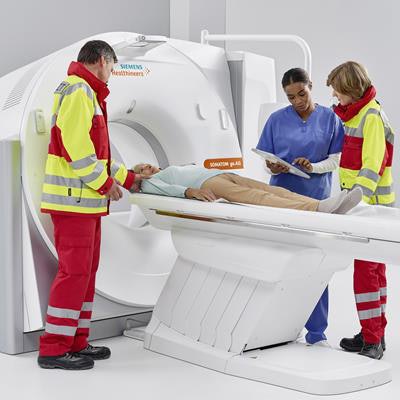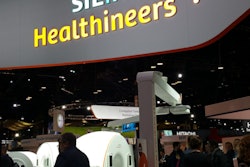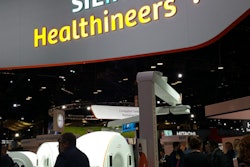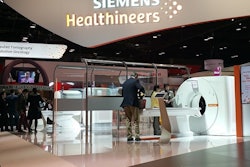
Siemens Healthineers is launching four new CT scanners at this week's RSNA meeting, including two systems that expand its tablet-controlled Somatom go platform into higher price points. The vendor will also show a novel automated patient positioning system based on a 3D camera installed in the scanning suite.
The first two Somatom go scanners were introduced at RSNA 2016 as offerings in the value-based segment of the CT market. The go scanners feature a workflow designed around tablet computers that technologists can use to control scanner functions, giving them more flexibility and enabling them to stay closer to patients.
At this year's RSNA meeting, Siemens is adding two new systems -- Somatom go.All and Somatom go.Top -- that are designed for more advanced applications, such as cardiac scanning and CT-guided interventional procedures, according to Christiane Bernhardt, director of business management at Siemens. Go.All is a 64-slice scanner and Go.Top is a 128-slice system; both sport a gantry rotation speed of 0.33 sec.
 Somatom go.All from Siemens.
Somatom go.All from Siemens.Siemens believes that the mobile workflow pioneered on the first two Somatom go scanners will work well on the more advanced systems, Bernhardt told AuntMinnie.com. For example, management of contrast exams should be much improved, as technologists can control scanner functions using a dedicated contrast management app on the tablet while setting up the injector next to the patient. Siemens even developed an integrated gantry-mounted injector arm that can swivel around the patient. It also includes a holder for the tablet for situations in which the technologist needs both hands free.
The same is true for interventional procedures, Bernhardt said. The scanners even include a gooseneck mount for the tablet that enables it to be used in sterile work environments, she said.
"We are bringing mobile workflow to the higher price point, and the tablet can now support more complex procedures," Bernhardt said. "This will open up the field for advanced clinical procedures such as cardiac and image-guided exams."
Siemens has also introduced several new apps on the tablet to help control various scanner functions, including Guide and Go for interventional procedures, Recon and Go for automated image reconstruction, and Check and Go to confirm organ coverage. Somatom go.Top also includes a twin-beam dual-energy application as an option.
Somatom go.All and go.Top include a 6 mega-heat-unit (MHU) Athlon tube that supports energy settings in 10 kV steps at high mA. The table load of the scanners is 227 kg, with a heavy-load option that brings the weight capacity up to 300 kg. A tin filter is also available for low-dose scanning.
The new go scanners will be available in the second quarter of 2018, depending on regulatory clearances. Siemens plans to make the new apps and enhancements on the tablet computers available to the installed base sites with existing go scanners, Bernhardt said.
The Somatom go line isn't the only Siemens product offering to get a makeover, however; Somatom Force and Somatom Edge scanners are also getting new features. Force is Siemens' flagship dual-source CT scanner, and the second generation of the system has a new look and feel with new gantry covers, as well as more automated features such as automated cardiac scanning from the console. The system also has two new Vectron x-ray tubes with a focal spot of 0.3 mm to 0.5 mm.
Edge is the company's premium single-source scanner, with the upgraded system now called Edge Plus. The enhancements include a Straton MX Sigma tube with a high mA range, Stellar Infinity detectors, tin filters, and twin-beam dual-energy scanning. The system has organ coverage of 230 mm per second with a 0.28-sec gantry rotation time and 78-cm bore. Siemens is also highlighting the scanner's power as a benefit for scanning obese patients, with plenty of power available in 10-kV steps. Edge Plus also sports two touch panels to enable technologists to stay close to patients.
Finally, Siemens is using this year's RSNA show to demonstrate a 3D camera designed to assist with patient positioning. The camera is mounted on the ceiling directly above the patient table, and it acquires a 2D image of the patient that also includes 3D information like anatomical landmarks and information about the patient's size, height, and weight.
The scanner uses data from the camera to ensure the patient is positioned correctly -- for example, if a feet-first scan has been ordered, it will issue a warning if the patient has been positioned head first. Users can also use data from the camera to plan a topogram to ensure that an entire organ is covered. A machine-learning component in the operating software ensures that the camera is constantly learning and improves its performance.
The camera will be available on the new Edge Plus, Somatom Drive, and new Somatom Force scanners, and an upgrade will be made available to the installed base of Force and Drive customers with dual-source systems.



















